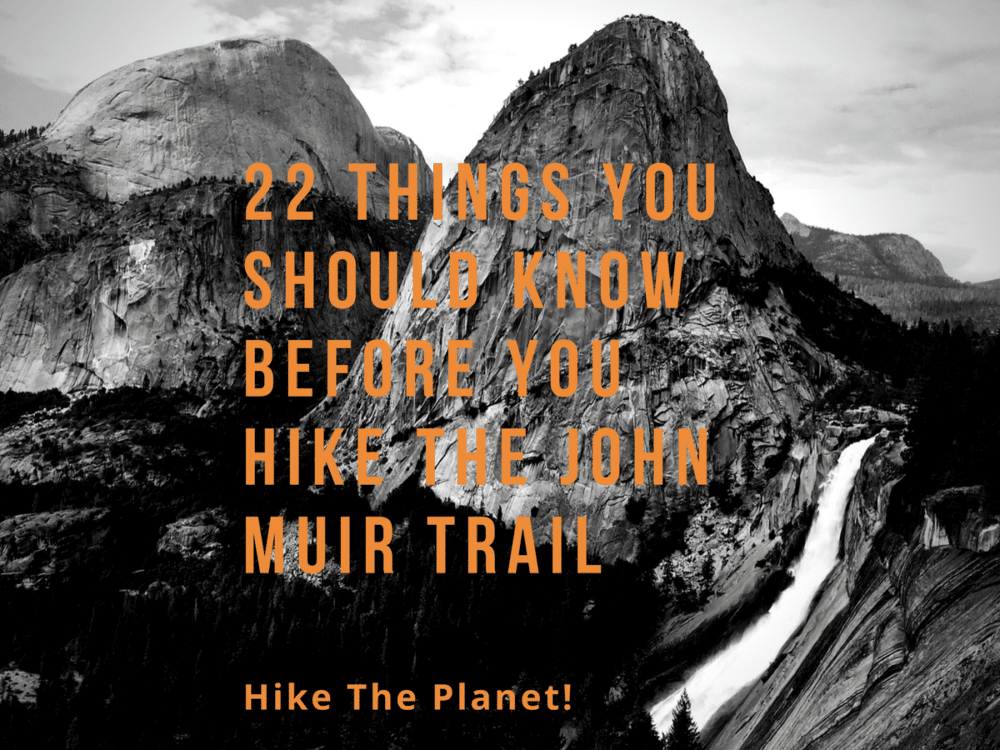The 22 Things You Should Know Before You Hike the John Muir Trail
Table of Contents
Update 8/31/2019: Updated Links, added another point.
The John Muir Trail is one of the most popular long distance trails in the world. People come from all over to thru hike it. It’s 211 miles takes one though three national parks, snow covered passes, and the highest peak in the lower 48.
For many (like me) it is their first thru hike. For others, hike the John Muir Trail is a life long goal. While plenty of information on gear, resupplies, and permits can be found elsewhere. I think it would be useful to highlight some of the lesser known nuances of hiking the trail.
These are all things that I wish I had known before embarking, and I hope that they will prove helpful to other first time John Muir Trail hikers as well. Here are some tips for hiking the John Muir Trail.
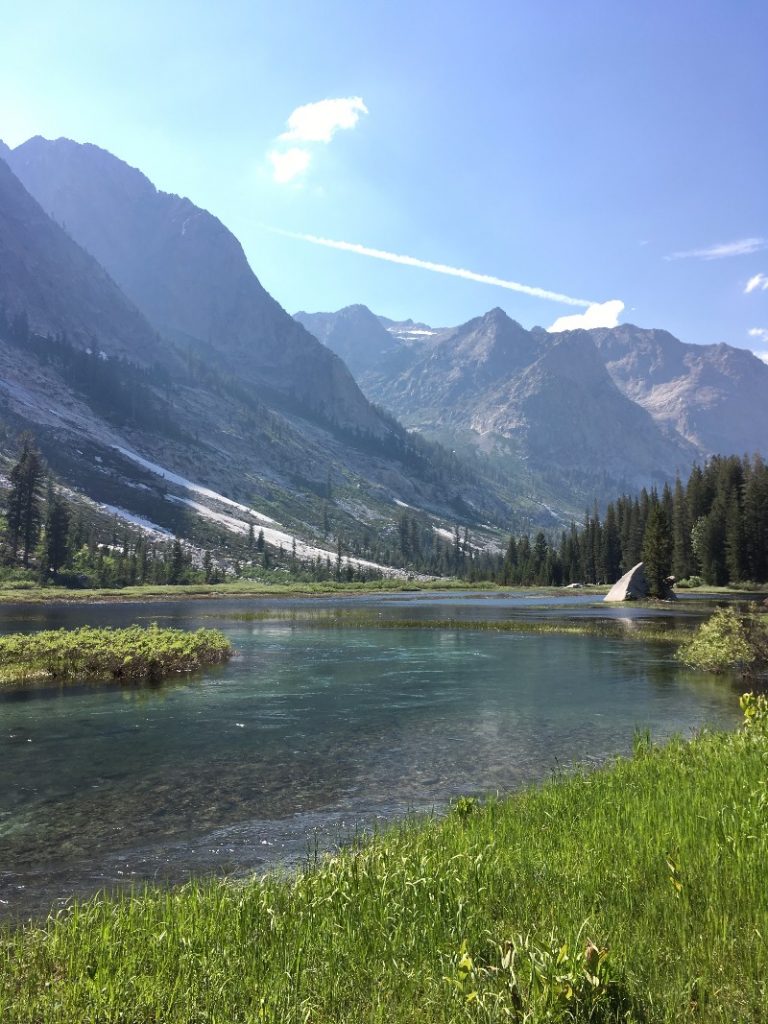
Related: The 5 Toughest Hikes in Yosemite Valley. These are awesome trails that closely mimic many of the hiking conditions that you will encounter on your thru hike. As such, they are perfect for training!
1. Many Hikers Exhibit Poor LNT Practices
This is an unfortunate fact on the JMT. Many people who set out on the JMT do so without following adequate LNT (Leave No Trace) practices.
In popular campsites, you may find discarded used toilet paper lying about, or other hygiene items. Some folks may not leave their campsites as clean as they found them, leaving behind small bits of food (microtrash).
Other times, a campfire may be left smoldering in an area prone to forest fires, while some may choose to hike off trail. These are all habits that can needlessly degrade the health of the wilderness and the experiences of other hikers.
Before you set out on hiking the John Muir Trail, read up on the seven LNT principles. Doing so will help to keep the trail in good condition for generations to come. Some of these practices can be hard to adjust to (e.g. packing out your used toilet paper) or time consuming (digging an adequately sized hole to poop in).
2. Educate Yourself on John Muir and the Sierra Club
This is one thing that I wish I had done before I set hiking the John Muir Trail. John Muir was an important figure in American History. His compelling personality, poetic writings (read: verbose) helped to kickstart the start of the American conservation movement.
Hundreds of peaks and streams along the trail all bear the legacy of John Muir and the Sierra Club. If one hikes equipped with knowledge of these features, I believe that it can enhance the appreciation of the heritage and legacy of the trail.
John Muirs books are still in publication today. Pick up a copy of My First Summer in the Sierra for a good primer on Muir’s time in these mountains. Other figures, like Joseph Leconte, and Norman Clyde, also have fascinating stories that helped to shape the history of the Sierra Nevada Mountains.
3. Get Yourself a Bear Can
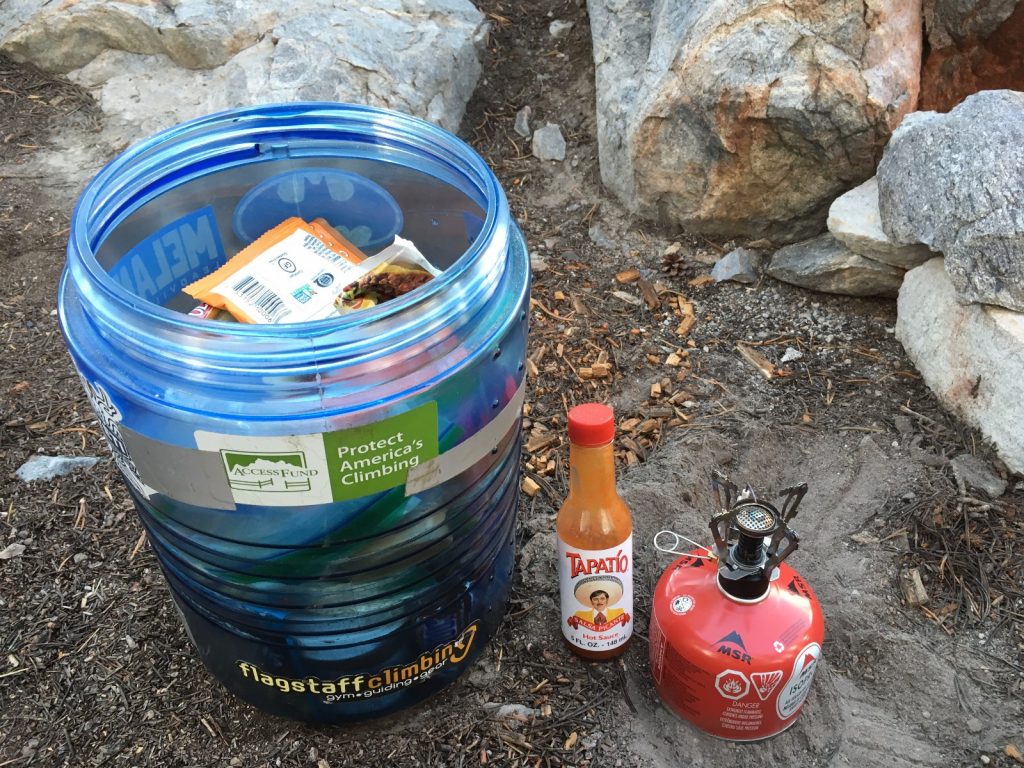
Bear cans are an absolute necessity on the trail. They protect your food, and protect the bears. In fact, they are required by law. There are several bear cans available for purchase, but the most popular ones are made by Bear Vault, probably because they are most affordable. I would not recommend anything smaller than the BV500.
During our ten day food carry, each of our Bear Vaults was stuffed to the gills, forcing us to get creative with how we packed our food. A Bear Can will add a bit of extra weight to your pack. Sometimes, people have found it tricky to open and close.
Side Note: I recommend adding stickers and/or reflective tape to your bear can. During their attempts to open it, bears have been known to knock cans off of cliffs, or into streams. Having some sort of marking will help to spot your can.
4. You Can Find Alternate Crossings for Nearly Every Creek
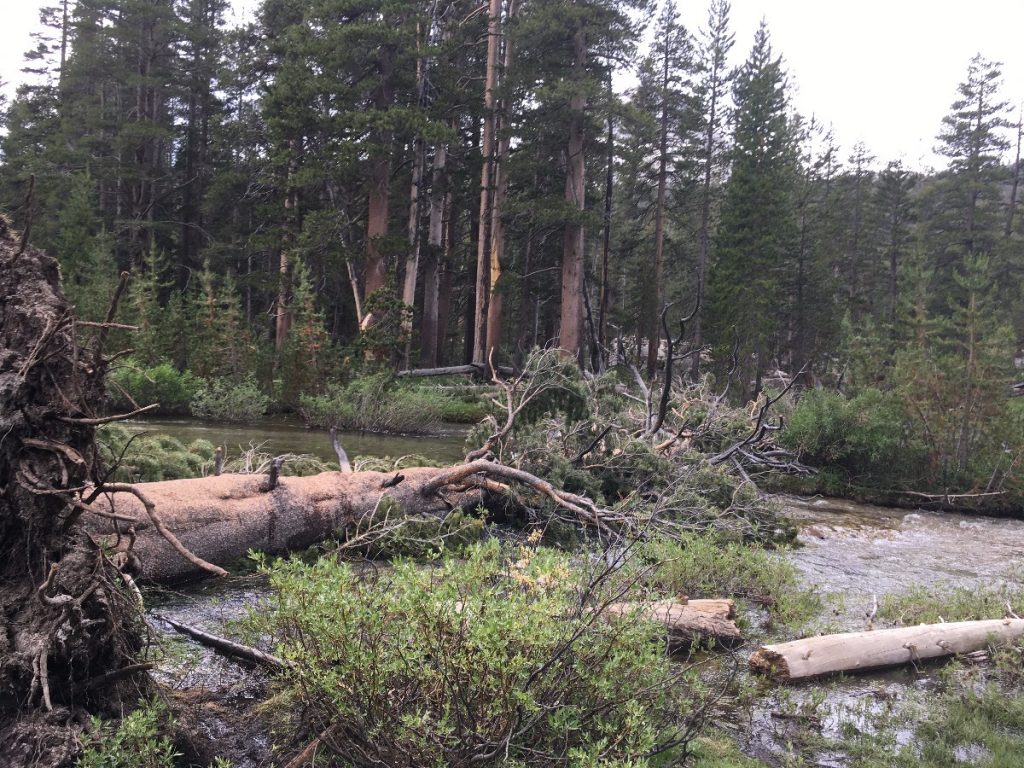
The John Muir Trail is known for its water crossings. Depending on the year, they are fast, deep, and cold. If you are not careful, these water crossings can wash you away. Unfortunately, at least two hikers met this fate during the 2017 hiking season.
While the circumstances surrounding their fates are not entirely known, how one chooses to cross a river is a personal choice, and risk management in the outdoors is subjective. Fortunately, there exists ‘beta’ for nearly every one of the notorious water crossings.
Of all the obstacles one can encounter along the trail, water crossings are both the most common, and the most unpleasant. Hikers are happy to share their reports of streams, and will often tell of a log, or a wider, slower part of the river that is much safer to cross.
Also, before you set out, read up on how to safely cross a river.
5. Learn To Love Water Crossings
The water in the Sierras is cold, deep, and fast. There is so much of it, in fact, that having to wade through it is a given.
While I mentioned that alternate crossings exist, this could just mean that a sucky water crossing became a little less sucky downstream. As such, accept and embrace water crossings earlier, and you will be happier while hiking the John Muir Trail.
Pro Tip: Invest in footwear that drains easily. You don’t want to be walking around with soggy socks all day. Contrary to popular belief, waterproof footwear is not ideal. It may keep some water from getting into your shoes, but will also keep water getting out.
My Recommendation: The Altra Lone Peak is a lightweight, breatheable trail running shoe that will cross any sierra stream with ease.
6. The Public Hiker Buckets Are Not Always a Reliable Food Source

The public hiker buckets at Muir Trail Ranch-where hikers discard food, supplies, and gear that they no longer want, are used by many to supplement their own bear cans. Occasionally, folks who did not mail ahead a resupply rely on them entirely.
For one, the only thing we found in the hiker buckets was some instant coffee, a little bag of granola, and other miscellaneous food items. While it was nice finding coffee, there is probably not enough food to equip a hiker.
I did happen upon an insulated mug cover that replaced the one I accidentally lit on fire that very morning. This was a fortunate find, but otherwise, it’s slim pickings.
7. Some Route Finding Required
Though the John Muir Trail sees many hikers every year, this well trodden trail is subject to being snowed in, submerged, burned, and eroded. Despite the hard work that goes into maintaining the trail, you cannot expect trail crews to keep every inch of it’s 211 miles in hiking condition.
John Muir Trail conditions can vary season by season, and even day by day. Thus, be prepared to travel off trail at times to detour around obstacles. This is where maps, a gps, a compass, and/or a good sense of direction come in handy.
We used the Tom Harrison map set. They are waterproof, and you can split the weight among party members. They allow you to focus on one section of the trail, and are useful for determining mileage, water sources, and camping areas.
On many hiking adventures, I have used Gaiagps to navigate, track trails, and identify way points. It is by far my favorite GPS hiking app, proving itself useful time after time.
Buy: John Muir Trail Map-Pack: Shaded Relief Maps (Amazon)

8. Everything in Your Bear Can Will Start To Smell The Same
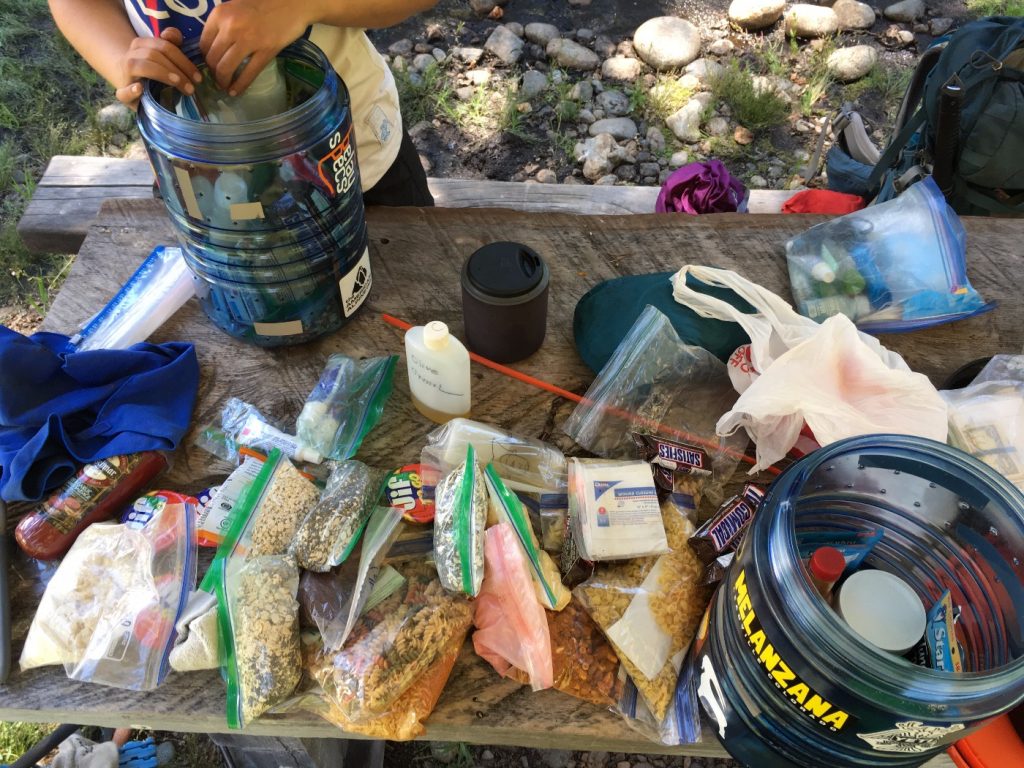
A natural consequence of smashing all your food together into a small, plastic cylinder is that it does a great job of intermingling the flavors. It will come to the point wear you start asking yourself “Hmm, which freeze dried meal shall I have for dinner tonight? The Bear Can with cheese, or the grilled Bear Can?”.
At the end of the day, I was too tired to care. After hiking all day, it is hard to be picky.
9. Vendors Along the Trail Are Expensive
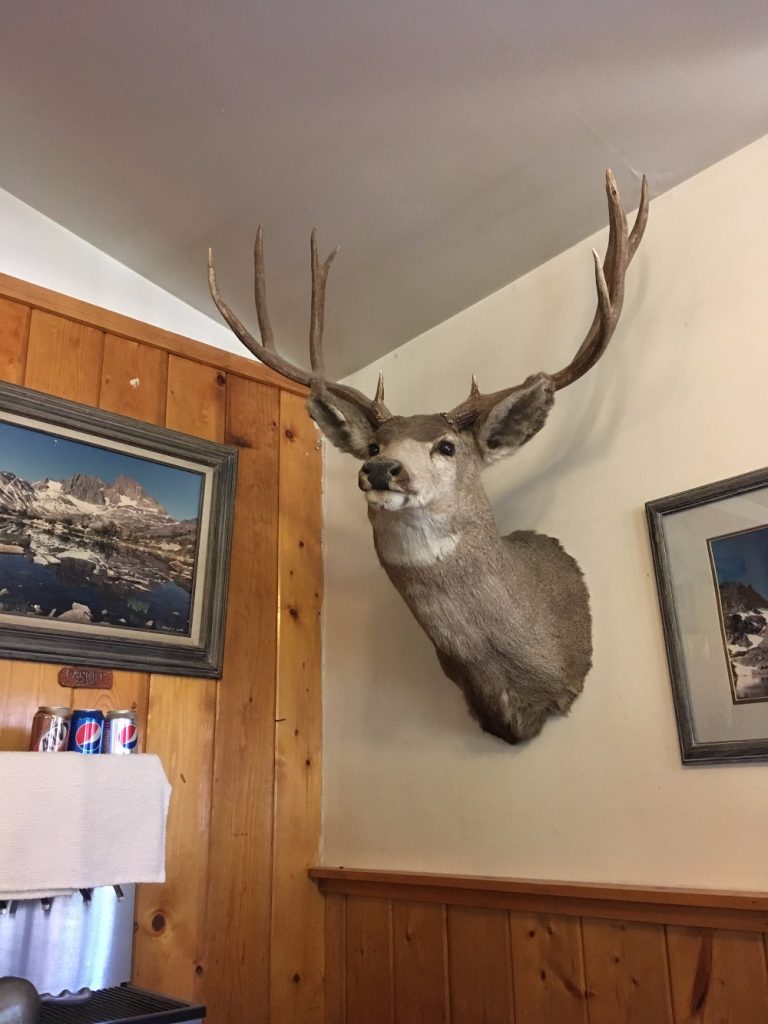
If you plan to purchase any supplies or luxuries at a trail vendor, be prepared to pay a pretty penny. Expect to pay twice as much at these vendors as what you would pay in the front country.
Vermilion Valley Resort is said to be a nice place. We wouldn’t know, as we did not stop there. But the cooked meals and cold drinks they provide end up costing hikers hundreds of dollars by the end of their visit.
Treat these as one might treat Las Vegas gambling: Only spend money that you are prepared to lose.
10. Non Thru Hikers will Smell Really Nice
After you’ve been on the trail for a few weeks, deprived of nice smelling soaps and lotions , your nose will be re-sensitized. You will walk past non thru-hikers, and do a nasal “double take” at their sweet scents. Their hygiene will drive home the fact that you desperately need a shower.
Be mindful of your own stink as well. After many days in the woods, people will be able to smell you before they see you. If you do have an option to clean up, do try before heading off trail into public.
11. Lower Your Standards of Personal Hygiene
For many folks, hygiene may prove to be the biggest hurdle to tackle when hiking the John Muir Trail. Indeed, many people refrain from outdoor activities due to lacking easy access to a hot shower.
While some are comfortable with the prospect of marinating in their own filth for three to four weeks, others may shudder.
As much as you may try washing yourself in streams and lakes, you will never feel completely clean. Instead, we compromised by using soap to wash only our hands, face, and nether regions. This allowed a modicum of cleanliness too keep us from going nuts.
We used Sea To Summit Citronella Wilderness Wash to keep clean. Many other hikers opted for Dr. Bronner’s Castile Soap. Vendors such as Reds Meadows will have hot showers, but they like to charge good money for just a few minutes of showering time.
To save some money, learn to embrace your filth as an essential part of experiencing the trail. It builds character, as some might say.
12. Bears May Seem Scary, But Bugs Can Be The Real Menace
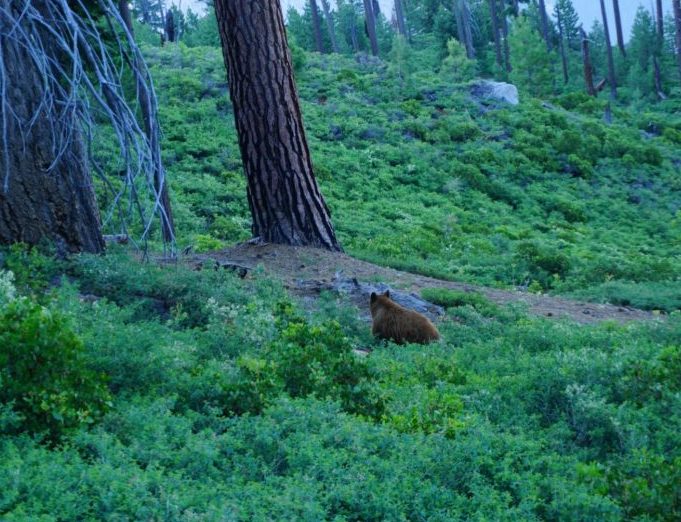
Lions and Tigers and Bears! Oh My! There are bears on the trail. In fact, the Sierras are known for the black bears that inhabit it.
While Bears and Mountain Lions may seem like big, scary animals, they did not prove a threat at all for the 250-ish miles we hiked. In fact, we saw a bear once, on our last day on the trail. It was just scratching at a log, when some other hikers came by and startled it away. Bears scare easily.
Mountain Lions have a reputation as killers. They have been known to stalk hikers for miles. Fortunately, they are incredibly elusive, with attacks on humans being extremely rare. If you do actually happen to see a cougar in the wild, consider yourself lucky, as these animals are experts at not being seen.
But the real problem fauna on the trail are all the bugs. My goodness, there will be bugs. No amount of DEET will keep you fully bug free, and they will pester you non stop anywhere near a water source. Some creeks, such as Evolution Meadows and Deer Creek, had it worse than others.
We found that a bug net was the best investment to protect oneself from mosquitoes and the like. I wish I had purchased a bug net before I started hiking the John Muir Trail, rather than halfway through.
Word to the wise: Don’t get a coghlans mosquito net. They have a ridiculous, boxy shape, and don’t stay on your head very well. I recommend the Sea To Summit bug net, as it has a simple design that merely drapes over the face, and does the job.
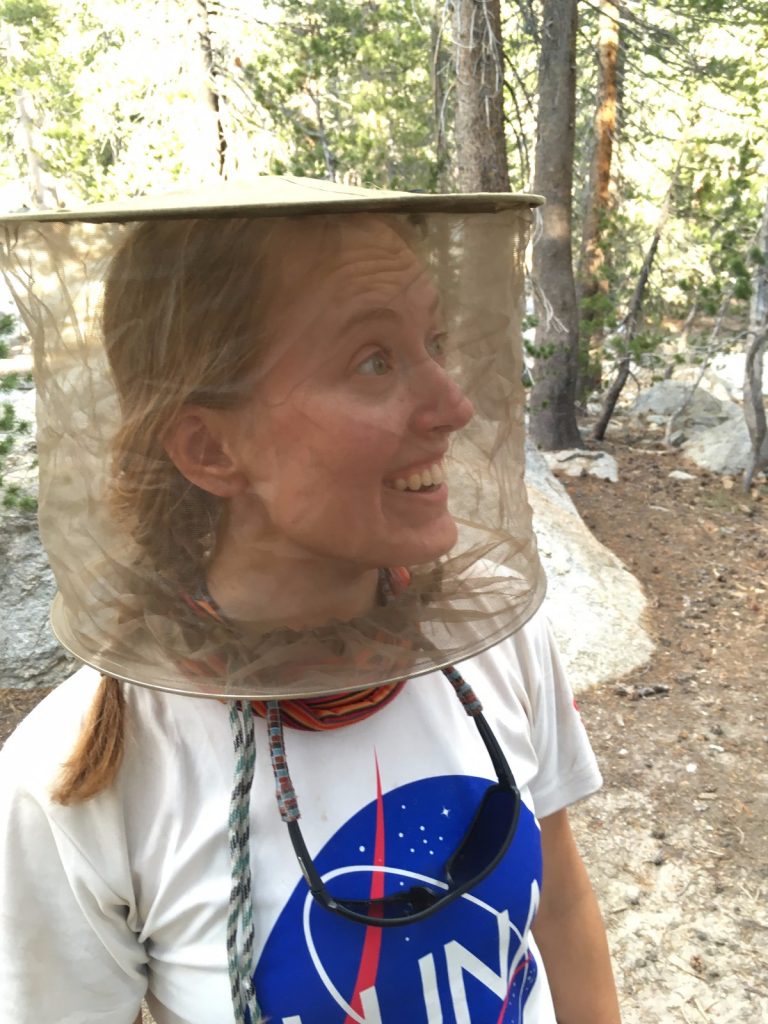
13. Your Gear Will Break
This is nearly a given for any thru hiker. Half way through the trail, one of my trekking poles broke. My partner’s ice axe ripped a hole in her pack cover. While these were not catastrophic failures of essential pieces of gear, they proved to be an annoyance.
Many other hikers are not so lucky, where a ripped sleeping bag or a hole in your rain fly can mean all the difference between a pleasant hike, and a miserable, potentially dangerous situation.
Take care of you gear, and learn how to repair it in a jiffy. Consider taking along a sewing kit, glue, and tape, and know how to use them. These may mean the difference between wet, cold nights, or an enjoyable adventure.
14. Be Sure To Have Your Trail Permits Readily Available
The rangers who patrol the trail are adamant about making sure that you have the right permits. If you lose them, you will get a fine. For whatever reason, our permits were never checked. But we met several hikers who’s permits were checked very frequently. Keep them ready, and keep them safe. Rangers were most common at either end of the trail, rather than its interior.
Looking to Get John Muir Trail Hiking Permits?
Securing John Muir Trail hiking permits can sometimes be the biggest hurdle for prospective hikers. The high demand for spots on the trail outmatches the number of permits given out. For more information on getting your permit, check out this helpful page on the Pacific Crest Trail Association Website.
15. You Will Meet People From All Over The World

The John Muir Trail is considered to be one of the most beautiful slices of wilderness in the entire world. As such, people flock from all over the world to come and enjoy it.
We met folks from Germany, the United Kingdom, Australia, and Israel. All the varying cultural backgrounds made for a rich social experience on the trail.
16.You Will learn How to Ration Your Food
Towards the latter half out our ten day food carry, we were growing weary of our supplies. We were not always making the mileage goal for the day, and our food was dwindling. The prospect of eating the bag of instant mashed potatoes that I was saving for an emergency started to become more real.
As such, we had to rearrange our eating schedule. Instead of full meals, we would eat half. We ate dinner for breakfast, and had oatmeal as a cold, mid day snack. If you are doing a long food carry, be sure to plan your meals well.
17. City Life May Seem Overwhelming
When you finally step off the trail and onto concrete, you may be somewhat startled. After all the nights under the stars, the water crossings, and the freeze dried meals, crowds will seem alien. It may take some time to readjust to crowds, loud noises, and real, cooked food.
At times, you may even be put off to the thought of returning to civilization. Trail Life offers a certain kind of simple freedom that is not common in daily life. It is a pleasant pace that feels natural. It is this feeling that causes so many people to take up the thru-hiking lifestyle.
18. Many of Your Conversations Will Be About Food
Here’s a short list of the foods I craved on the trail:
- Key Lime Pie
- Cheeseburgers
- Milkshakes
- Those dried mango slices with chili powder on them (my favorite food, by the way).
- Steak (Rare)
- Trail Mix (I did not pack any)
- Alcohol
- And many more!
About half of our conversations devolved into what sort of food we were craving. We promised ourselves that as soon as we reached civilization, we would gorge ourselves. And my goodness, we did. As soon as boot met pavement, we were shoving burgers, beer, and candy in our faces. It made for a cathartic, albeit expensive rest day.
19. Keep Your Rain Gear Handy
The weather is unpredictable on the trail. I recommend keeping your rain gear nearby for those afternoon thunderstorms. Adequate rain gear includes a rain jacket, a pack cover or pack liner, and waterproof pants.
In one afternoon, we went from rain, to hail, and then back to sunshine and blue skies all within the space of an hour. Be prepared for rapid changes in weather. It is important to understand how layering works as well. Doing so will maximize your warmth and comfort while minimizing the weight you carry. For a brief primer, check out my write up on layering.
Also, I recommend educating yourself on backcountry lightning safety. Know how lightning is attracted to high, exposed points, and how to protect yourself from strikes.
20. There Will Be Snow
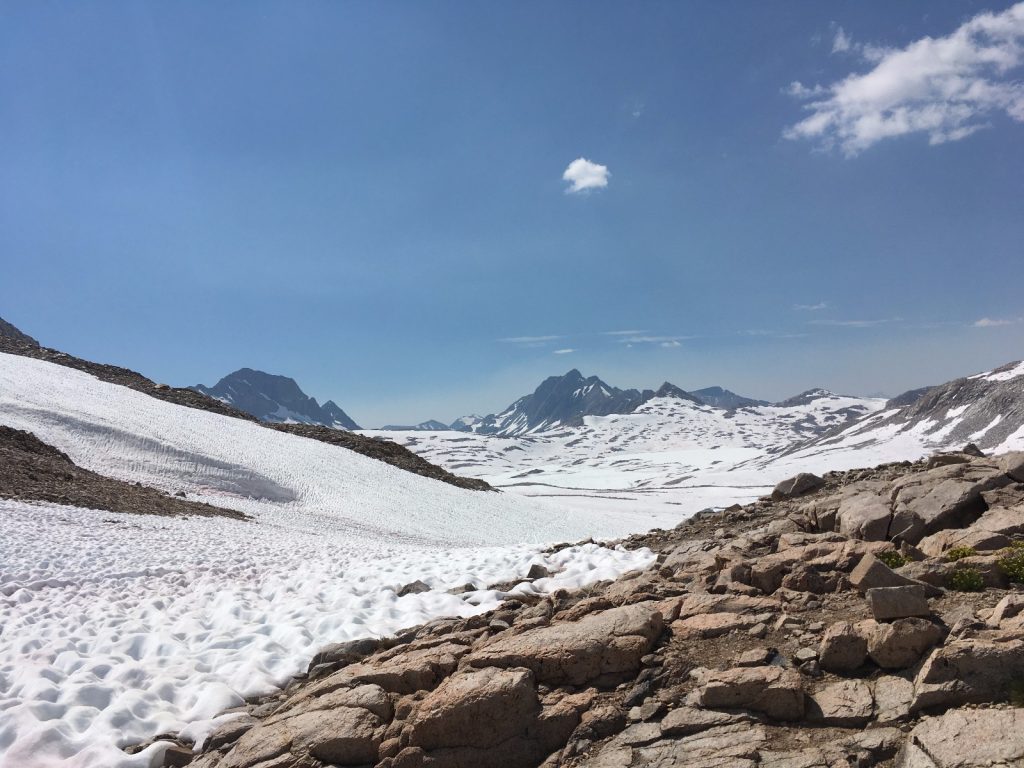
The High Sierra is known for its snowfall. Seasonal accumulations regularly reach into dozens of feet. This snow is treasured by the state of California to irrigate its vast agricultural base, and loved by skiers flocking to Mammoth and Tahoe.
Unfortunately, snow can be the bane of a John Muir Trail hike. While the majority of it melts in the spring time, just enough sticks around to cause annoying, and sometimes dangerous hiking conditions.
Due to its topography, Muir Pass saw us trudging through six straight miles of snow. In other areas, snow can create snow chutes that can prove dangerous if not properly navigated. 2017 saw the highest recorded snowfall since the beginning of the California Drought. In late July of this year, hiking through snow was guaranteed.
We equipped ourselves appropriately with microspikes, gaiters, and ice axes. We were very glad we had them, yet we still found ourselves slipping, sliding, and post holing. A drier season hiker may see less snow, but encountering some is a safe bet regardless.
If you choose to hike the trail in the later season (September, October), you may encounter little, if any snow. This is a popular choice for many hikers wishing to avoid the white stuff. Unfortunately, there is a trade off.
Less snow means less water overall, meaning that you will have to be more careful with your water supply. There will be an abundance of water earlier (July and August), with a trade off of more snow and mosquitoes. I guess the point I’m getting at is that there is no perfect time to hike the trail. Really, it comes down to whatever challenge you find most manageable.
21. If You’re Not Going Ultralight Now, You Will Want To After You Finish Hiking the John Muir Trail
At it’s heaviest, my pack weighed close to fifty pounds. Even without food and water, my base weight was much too heavy. I enjoyed (almost) every mile of the trail, yet the weight of my pack diminished it somewhat. Every morning, I dreaded the moment when I would again have to shoulder my heavy pack.
I groaned at the prospect of climbing another pass with my excess weight. My heavy pack didn’t ruin the trail for me, but it sure made it less fun.
Inevitably, some other hiker with a simple, pared down ultralight kit would pass us on the trail. Usually, these were PCT hikers cruising their way to Canada. I realized that an ultralight set up would turn my type 2 fun into type 1 fun. I vowed that I would slowly undergo the expensive process of lightening my pack weight.
Ultralight Backpacking is a science in itself. Carefully, people scrutinize the weight and dimensions of every piece of gear, down to the last tent stake. An ultralighter will take scissors and happily remove excess weight from their kit. They will forego stoves, and shell out hundreds for gear made from space age materials.
Cottage industry gear manufacturers and big brand names alike love to charge a gazillion dollars for their packs and quilts and rain jackets. On my tight college student budget, buying ultralight gear will be a slow process.
Although, it doesn’t have to be expensive. Much of my excess pack weight was because I took along things that I never used on the trail.
I brought along too many socks, a bunch of pens (so that I would have infinite backups for my notebook), and a pair of binoculars. A pair of freakin’ binoculars. What was I gonna do? Get a closer look at all the beauty. Much of ultralight backpacking boils down to being more mindful about what you bring along.
There are about a million tips and tricks to help you save weight in the outdoors. For a more satirical look at ultralight backpacking, check out my article 17 Little Known Ultralight Backpacking Tips.
22. Nuumu Poyo-Know the Indigenous Name for the Trail
Long before any Thru-Hiker set boot to trail, and long before John Muir came to be revered as some sort of messiah figure, Indigenous peoples lived, survived, and thrived in the lands that are now traversed by the John Muir Trail. Every peak, valley, and creek have their own names and cultural significance.
The trail itself roughly follows the path of an ancestral trade road known to the Paiute people as the Nuumu Poyo.
When hiking the trail, it is important to be respectful of the original inhabitants of this land. Be aware that you, and your fellow hikers are not the first to walk the Sierra Nevada. Nor was John Muir, or any European settler. Take care to reduce your impact.
Conclusion
This list is by no means conclusive. Many of these points were compiled towards the end of my hike, and are reflective of many of my experiences. That being said, your own hike will be different from mine.
Factors such as weather and trail conditions are subject to change, or you may hike at a different pace than I did. Some of these points may lose their efficacy, or they may prove even more applicable to your experience.
Hiking the John Muir Trail is a great experience, and I hope that your time on the trail was as good, if not better, than my own. Maybe it will spark a fascination with thru-hiking, like it did for me. Or maybe you will swear off thru hiking forever, but I hope that these 22 tips for hiking the John Muir Trail will prove useful for when you plan your hike.
- The Best Campsites Around Big Bear California - February 26, 2021
- Hiking to the Hollywood Sign Via the Brush Canyon Trail - July 13, 2020
- Dirt Cheap Hiking and Backpacking Gear: The Most Affordable Gear on the Internet - July 4, 2020
